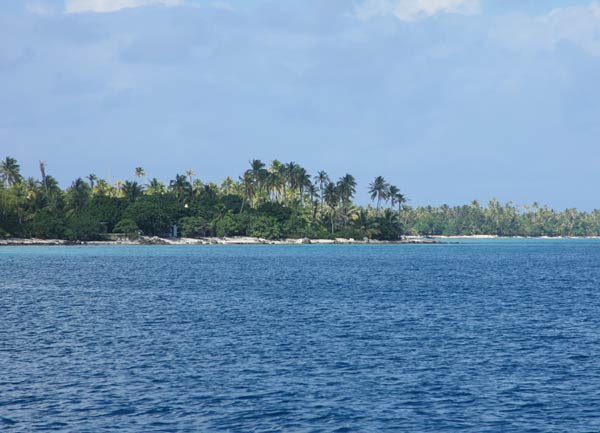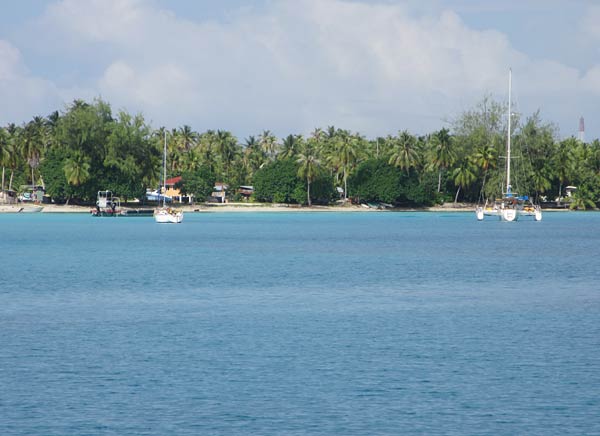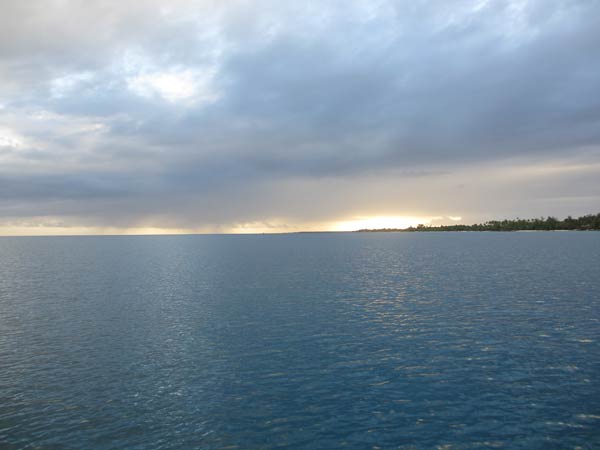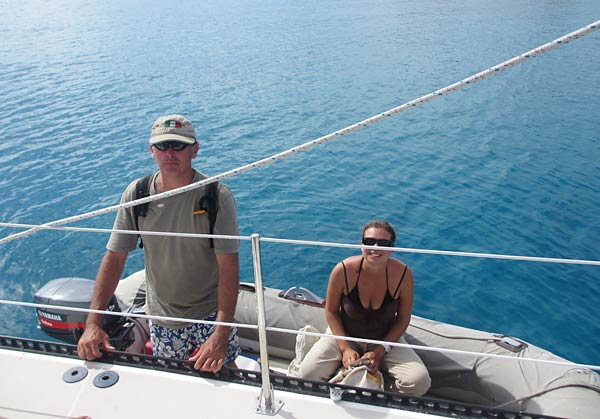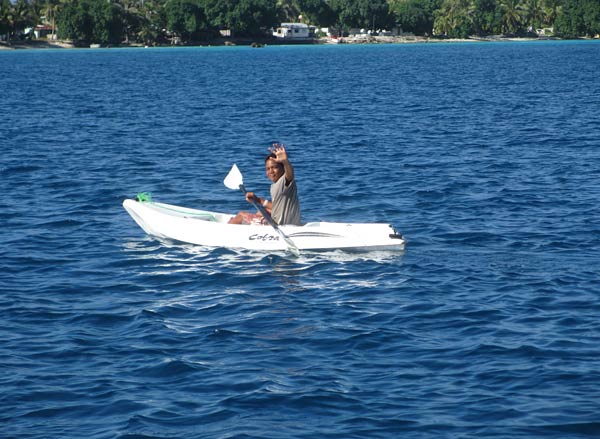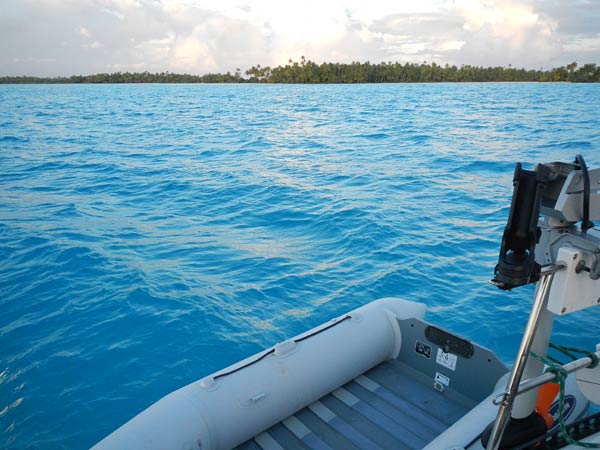July 2, 2012
There are a lot of things to love about this life, and we post a lot of pretty pictures, but the reality is that there are many challenges that we face along the way. Some of them are relatively minor, and some are more difficult and even dangerous. What makes these challenges and discomforts worth enduring are the rewards: beautiful scenery, good food, new friends, and the excitement of novelty and discovery. There is a certain balance, what I call a golden ratio, of good to bad experiences that make this lifestyle worthwhile. Rich has nicknamed this the e/a quotient (Ecstasy/Agony). When this gets out of balance the wrong way, when the “agony” percentage gets too high, then a person has to re-evaluate the plan. Some people quit all together, some decide to cruise part time, and some simply wait for the balance to be restored.
Rich and I went through this process at the end of our passage to Fakarava. I will mention here that by the time we arrived in the Marquesas, we had accumulated a high “agony” balance. I have been meaning to write about the passage but just never got to it. I will sum it up by saying it was surprisingly difficult. We have made two passages to Hawaii and back (back is notoriously uncomfortable) and to Mexico, and we thought we knew the passage process very well. But we were surprised by this one. What we thought would be our most comfortable passage turned out to be the hardest passage we have ever done. We had good winds (and with that we were lucky) but we were knocked around by a harsh and relentless swell from the east pretty much the whole time. By the time we arrived in Hiva Oa, we had been “ridden hard and put away wet,” as I think the saying goes.
And so we began our Marquesas cruise with a deficit, but soon we were having experiences in the “ecstasy” category, and our quotient was coming back into balance. After beautiful Daniel’s Bay, we headed back to the anchorage we missed in Ua Pou (Hakahau) to wrap up our cruise of the Marquesas. We met some friends there and had a nice night with them before they headed on to another island. This left us with a weekend there while waiting for a weather window for our next passage.
At this point, it became apparent this town had some annoyances: young people partying and blaring music on the dock (right next to the boats) until 3am, few clouds which made for relentless heat during the afternoon, children who like to use your dinghy as a swim platform after you leave it (which means a dinghy full of water and sand when you get back), and one particular local who really makes a pest of himself as he “befriends” the boats anchored there (I won’t go into details on this, but trust me).
Needless to say, we were anxious to leave in spite of a weather forecast that was less than ideal. We did leave on a windless morning and ended up stopping at a beautiful anchorage on the other side of the island, which we had all to ourselves. The annoyances of the past weekend were quickly forgotten in this beautiful place. But we were feeling anxious to move on, and if we waited for ideal conditions, we could be here for weeks. Actually, the biggest problem was a predicted two days with little wind.
We did head out and had some lovely wind to for the first day or so; then we got into that predicted period of no wind. It was comfortable enough but no sailor is ever happy using that much fuel. It was a relief when the wind came back up, but then concerning when it kept going up, becoming gale-force winds on our final night. It was a rather harrowing trip to Fakarava, and once we got there, we had to kill time and wait for an in-going tide so we could get through the passage into the atoll.
Luckily, being at the north end, we had gotten out of the south swell. Rich was able to put the boat on auto pilot and motor slowly along the top of the atoll and back, killing the 3 hours we needed to kill. In the meantime, our e/a ratio was seriously out of whack once again as this passage, added to the passage from Los Angeles, made for big e/a deficit once again.
Sailing on the ocean takes strength, endurance and courage, and these are things we have less of than we did 10 years ago. We had to ask ourselves if we were really up to this, and start listing our options if we weren’t. We have good friends who are ahead of us on this trip, and they had decided to put their boat in storage in Tahiti early in August and then return again next April after a much-needed break. They, too, had a rough passage, and they have decided not to do this full time. Our strategy was just to list our options, and then to wait and see what happens in the coming weeks.
As often happens after a bad experience, you end up someplace wonderful and have an especially nice time. That is what happened to us in Fakarava, which has been wonderful enough to restore our e/a balance (even with the wild ride while exiting the atoll), and for the time being we have decided to continue on.
We still think we are going to New Zealand, but we have discussed the option of sitting out the off season in a place like Tonga or Fiji as the New Zealand passage is intimidating. Time will tell. For now, Fakarava was incredible. Next Toau and we are hearing reports that it’s a very magical place. Stay tuned. -Cyndi
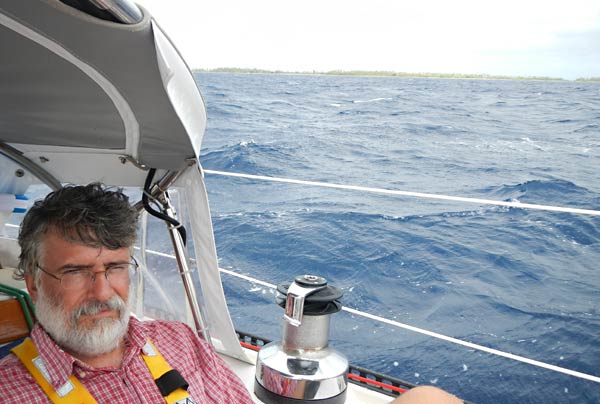
e/a approximately equal to zero as we kill time before attempting to enter the north pass of Fakarava after a rough passage from the Marquesas.

